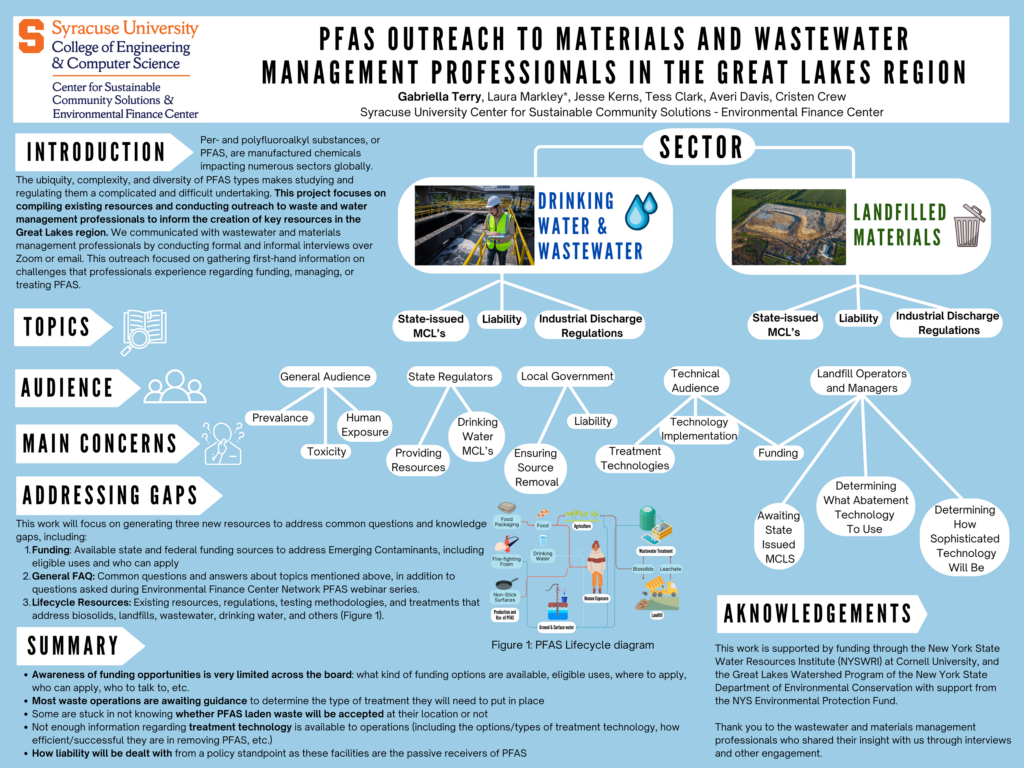First Impressions
Prior to the start of my internship at the Syracuse University Environmental Finance Center (SU-EFC), I had never even heard of the term ‘PFAS’. However, a bit of research on Per and Polyfluoroalkyl substances revealed an alarming issue that I was eager to learn more about.
From the moment I interviewed with the SU-EFC team, I knew the Center was a special place. I remember walking out of the office that day thinking, “I want to be them when I’m older” – a thought that remains true to this day.
The Project: PFAS Outreach to Materials and Water Management Professionals in the Great Lakes Region
The project we set out on was intended to develop resources for drinking water, wastewater, and materials management professionals in the Great Lakes region in regard to PFAS contamination in their operations. After conducting several interviews, we ultimately decided to focus on three key areas:
- Funding for PFAS Remediation and Treatment
- PFAS Sampling Frequently Asked Questions
- PFAS Lifecycle Resource Compilation (Figure 1)

My primary focus involved conducting outreach to environmental professionals in Central and Upstate New York. We began by emailing ten professionals but received only two responses. After conducting additional outreach, our next plan of action was to conduct informal interviews over Zoom. We completed five interviews total with water and materials professionals across different sectors and counties. They provided valuable feedback on what they were doing to mitigate PFAS contamination and identified their needs and resource gaps. Many Publicly Owned Treatment Works (POTWs) were concerned about funding, as sampling and treatment can both be costly. Others demand to see change happen from the source, as liability has fallen on the municipal systems who act as passive PFAS receivers, rather than generators. I compiled and analyzed this feedback and designed a poster to be presented at the 2nd Annual Meeting of the NYS Center of Excellence in Healthy Water Solutions (Figure 2).
Conclusion: A New Perspective
To me, this experience was so much more than just completing my daily tasks. I learned something new every single day, and met so many incredibly inspiring, hard-working people that I may have never encountered otherwise. Gaining insight on what water and materials professionals dedicate their lives to everyday, along with working beside the incredible staff at SU-EFC, has changed my perspective of the world forever, and motivated me to continue my own hard work in both school and in life. Throughout this internship, I was welcomed into the water and materials worlds, showing me how to make real change, and for that I will always be grateful.
– Gabriella Terry, Undergraduate Student at Syracuse University’s College of Engineering and Computer Science, Environmental Engineering


